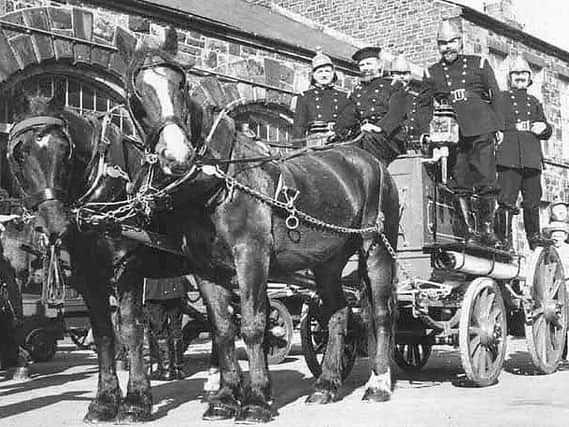Washing left to dry by fire sparked Preston blaze that killed three


Shortly after one o’clock in the morning on the last day of March 1875 a fire broke out on the premises 119 Church Street, Preston.
The building was occupied by James McNeil, a respected tailor and draper and had upper dwelling apartments, which extended over an adjoining shop of neighbour, Mr. Compstay, a tallow chandler.
Advertisement
Hide AdAdvertisement
Hide AdThe fire, when discovered, appeared to have obtained a complete hold of the whole interior of the building, as flames were seen bursting through both the windows above. The alarm was given by a passer-by, and was at once conveyed to the fire station on nearby Tithebarn Street.
Cries were made to alert the occupants who found their escape by the staircase cut off. Mr. McNeil and one of his sons, James Robert McNeil, aged 14, appeared at the second floor front window over Mr. Compstay’s shop and they both dropped into the street without harm.
They then joined the bystanders in an attempt to waken the others and eventually they were successful in arousing the housekeeper, Mrs. Mary Dewhurst, who also made her escape by dropping from the window to the street below. Unfortunately, no amount of commotion could awaken the other occupants of the building. The horse drawn fire engine crew and the police were soon on the scene and they began to quell the flames with powerful jets of water.
Within half an hour police chief Supt. Oglethorpe and the firefighters were able to enter the third storey of the building by ladder and before them was a harrowing scene.
Advertisement
Hide AdAdvertisement
Hide AdCharles McNeil, aged 22, was discovered in his attic bedroom, quite dead and alongside him was the lifeless body of his brother John, aged 19, both appeared to have been suffocated in their sleep. As the firefighters made their way along the staircase leadin g to Mr. McNeil’s quarters they discovered the body of Alexander McNeil, aged 10, who appeared to have been overcome by fumes and flames in a vain bid to escape. Stretchers were immediately acquired and the bodies taken to the dead house at the Tithebarn Street fire station.
On the following Wednesday evening an inquest was held before coroner Dr. Gilbertson and it was stated that washing had been left to dry overnight in front of the fire grate and that possibly a spark had set the linen ablaze. The stacks of drapery cloth had been reduced to tinder, the furniture in the kitchen had turned to ashes and the tallow chandler’s stock was burnt furiously, all testimony to how fierce the fire had raged.
The survivors of the fire were obliged to relive their nightmare and Mr. McNeil told of his efforts to arouse his family after waking due to a feeling of suffocation and he revealed that his two daughters, who also dwelt on the premises, had fortunately been staying with friends on the ill fated night.
Mr. Oglethorpe gave a detailed account of the involvement of the police and fire brigade and it was apparent they had acted swiftly in bringing the fire under control, enabling the forlorn search for survivors to take place quickly.
Advertisement
Hide AdAdvertisement
Hide AdThe coroner stated his regret at having to call Mr. McNeil and he expressed his deepest sympathy to his family. The jury, after a brief consultation recorded a verdict of ‘Accidental Death’ on the three victims of the terrible blaze. The funeral a couple of days later was a sad occasion with the streets to Preston Cemetery lined with mourners as the hearses made their way from the Red Lion on Church Street in silence as folk with heavy hearts paid their respects.
In October 1875 a notice appeared in the ‘Preston Guardian’ in which Mr. McNeil expressed his gratitude to those who had supported him in the troubled times and announced that he was about to recommence his tailoring business from his new premises adjoining his old shop at 118, Church Street. Unfortunately, his new venture was short lived as he died in November 1876, aged 46.